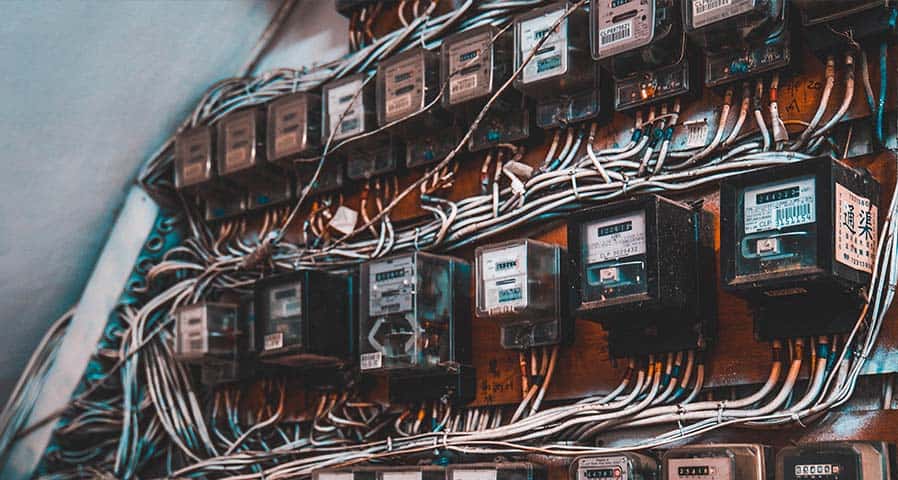While safety is always a priority concern, there are other considerations to take into account when you are selecting commercial wiring projects. Here’s a look at the three primary types of commercial electrical wiring.
Electrical Raceways
The NFPA 70: National Electric Code (Chapter 3) lists the requirements for commercial wiring. The chapter is aptly titled General Requirements for Wiring Methods and Materials. Chapter 3 also includes any exceptions pertaining to modifications.
Some of the requirements include securing and supporting the electrical installation, along with protection standards.
Electrical raceways and conductors are the most common types of commercial electrical wiring. Either a nonmetallic or metallic conduit is used with a multiple insulated phase. Some NEC requirements may also call for an equipment ground conductor. The installation requirements are based on the property’s design and specifications.
Some common types of conductors include THHN/THWN (thermoplastic high heat-resistant nylon jacket/thermoplastic heat and water-resistant nylon jacket) or XHHW (XLPE high heat-resistant and water-resistant) Most are comprised of copper, but you can also find aluminum conductors.
Electrical raceways are often used in commercial applications. Some of the types of raceways include,
- RMC (rigid metal conduit) is also known as RGS or GRC, a galvanized steel conduit with a thick wall and zinc exterior coating that’s used in applications where maximum protection against physical damage is required;
- IMC (intermediate metal conduit) is a thin-wall version of the RMC that features a corrosion resistant coating on the interior and a galvanized exterior;
- FMC (flexible metal conduit) is available in multiple types of metal and wall thickness.
- EMT (electrical metallic tubing) is the most common raceway in commercial construction, a threadless steel tubing with thin walls that has galvanized exterior and corrosion resistant interior.
- PVC (rigid polyvinyl chloride conduit) are available in several types, but mostly used as either Schedule 40 or 80, which refers to the thickness of the wall, for underground applications directly buried or concrete encased.
Don’t confuse raceways with cable trays. Cable trays are part of the structural system that supports and manages the various cables.
Even though electrical raceways are commonly used in commercial applications, they also have advantages and disadvantages.
Advantages
- It allows some changes in circuit configuration
- IMC, RMC & EMT can be used in places subject to physical damage
- Work well in electrical remodeling applications
- Raceways can be abandoned where the conductors are removed from the installation
- PVC underground installations are inexpensive
Disadvantages
- High installation costs
- It allows for a limited number of bends before requiring a junction box
- Installation can be more difficult compared to cabling systems because of more rigid routing requirements
- PVC has limited applications
- Some types cannot be installed in locations subject to physical damage
Electrical Busways
Electrical busways or bus ducts are another type of commercial electric wiring. An electrical busway is a metal enclosed raceway mounted by the manufacturer. Typically, there are two types of busways used in commercial applications, either plug-in or feeder style.
Like other types of commercial wiring, electrical busways have advantages and disadvantages.
The advantages include,
- Large ampere rating availability, anywhere between 60 and 4,000 Amps.
- Compact size compared to multiple conduits for the same load.
- Flexibility to add and change load takeoffs with plug-in busways.
- Less impact from total voltage drop with bus duct applications.
The disadvantages of using electrical busways are,
- If many elbows and offsets are required, installation costs can become expensive.
- Cannot be used in locations subject to physical damage.
- For vertical applications, there is limited space for bus plugs.
- Can fail if there are water leaks in the building.
- High short-circuit current available on the bus duct.
If you are looking for more information on electrical services and projects, check out our Electrical Education Center. We cover different types of electrical services, projects, common fire marshal violations, different types of electricians, and so much more.
Electrical Cable Assemblies
Electrical cable assemblies use insulated and neutral conductors with a grounding one. The grounding conductor can be insulated or bare. If bare, the conductor is either wrapped in a metallic or nonmetallic covering.
The cable assemblies can be ordered as standard products or created for a specific conductor configuration. Standard cable assemblies typically come with THHN/THWN or XHHW-2 (copper or aluminum) conductors.
The most common types used in commercial buildings are:
- Armored cable (type AC) – feature a metallic sheath of either steel or aluminum armor, the sheath is also used as a ground path. It’s typically used for branch circuit connections between luminaires and power receptacles.
- Metal-clad cable (type MC) –are conductors within a metallic sheath of either steel or aluminum interlocking armor, but the sheath is not used as a ground path in this case. For direct burial or wet location, MC is available with an outer PVC jacket.
- Mineral-insulated, metal-sheathed cable (type MI) –are copper conductors within a seamless copper sheath with a magnesium oxide insulation. It’s used for specialized applications such as compliance with NEC 700 emergency systems.
- Nonmetallic sheathed cable (types NM, NMC, NMS) – also known as Romex, are conductors assembled within a nonmetallic, PVC-insulated sheath with a nylon jacket. It generally has a bare copper grounding conductor.
- Service-entrance cable (types SE, USE) – are conductors with an outer PVC jacket, assembled within a nonmetallic sheath with cable reinforcement. It can be used for service drops to a meter pedestal, but also as a distribution feeder to a branch circuit panelboard.
- Underground feeder and branch-circuit cable (type UF) –are conductors generally used for outdoor direct burial feeders, as well as branch circuits to detached garages. They feature a nonmetallic sheath with PVC insulation and a nylon jacket contained within a gray PVC outer jacket.
Electrical cable assemblies have advantages, but the commercial wiring also has a few disadvantages.
Advantages
- Lower installation costs
- Faster installation time
- No limit on the number of bends
- Factor tested before mounting
- Type MI is fire resistant
Disadvantages
- Need to be supported and secured at shorter spacing
- Cannot make changes after installation
- Are not suited for areas where the assembly may be damaged
- Requires more planning before installation
The Right Commercial Wiring Can Make a Difference
Using the right commercial wiring can make a difference in your commercial building. It also helps ensure your building meets current electrical wiring standards. Whether it’s electrical wiring for a new construction or you are upgrading your current wiring, contact one of our specialists to find out how we can help ensure your electrical project goes smoothly from planning to installation.
Call 610-558-9773, emailing [email protected] or schedule a call that fits your needs by clicking the button below.








































0 Comments